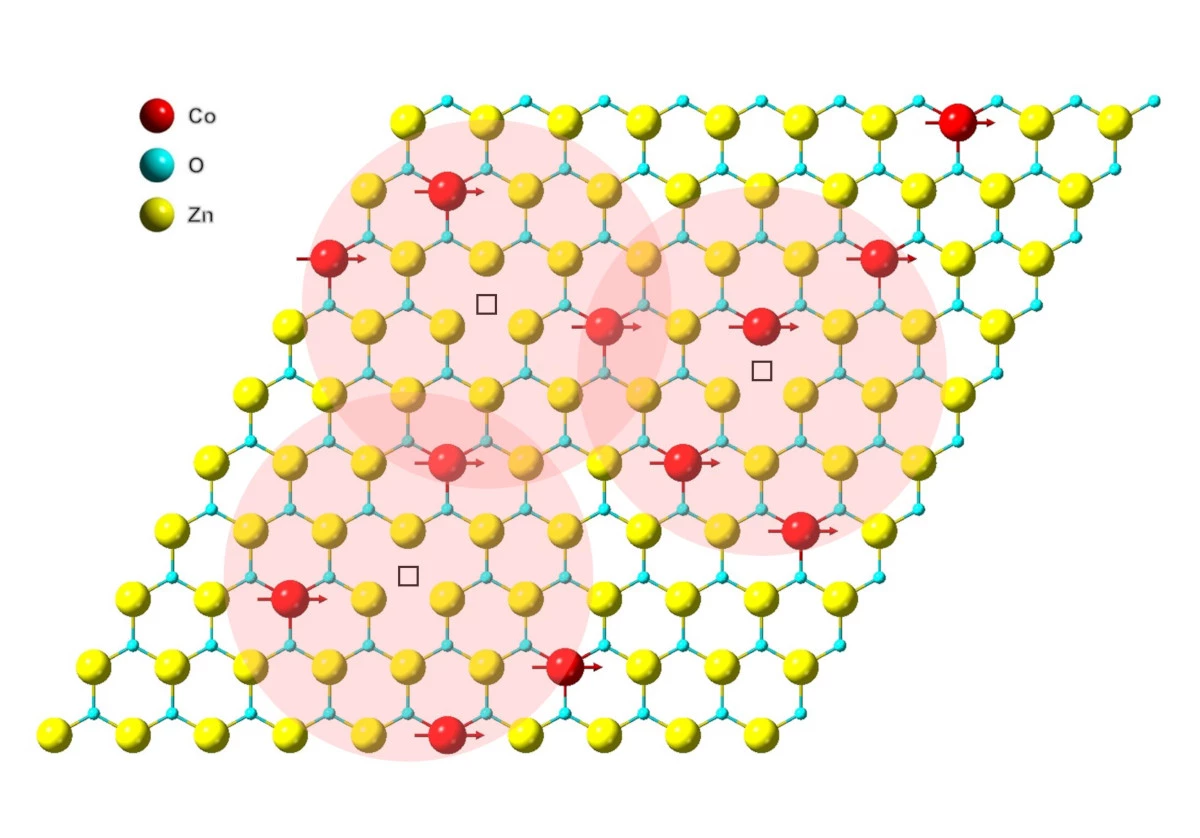In a breakthrough that could open up exciting new possibilities in computing and electronics, scientists in the US have developed a two-dimensional magnetic material that is the thinnest in the world. The magnet is just a single atom thick and, unlike similar materials developed previously, is able to function at room temperature, which, among other applications, could allow data to be stored at much higher densities.
Identifying two-dimensional materials with magnetic properties is something scientists have achieved before. In 2017, we looked at research investigating a ferromagnetic material called chromium triiodide, which scientists found could be shaved down into a one-atom-thick monolayer while maintaining its magnetism.
Scientists at the Lawrence Berkeley National Laboratory and University of California, Berkeley have been working to address one of the shortcomings of such previously developed 2D magnets, which is an instability at room temperature that causes them to lose their magnetism. This has limited the practicality of the technology so far, but the researchers have now found a promising way forward.
“State-of-the-art 2D magnets need very low temperatures to function," explains senior author Jie Yao. "But for practical reasons, a data center needs to run at room temperature. Our 2D magnet is not only the first that operates at room temperature or higher, but it is also the first magnet to reach the true 2D limit: It’s as thin as a single atom!”

The scientists started with a mix of graphene oxide, zinc, and cobalt that was baked in the lab and transformed into a layer of zinc-oxide with a sprinkling of cobalt atoms spread throughout. Measuring just a single atom thick, this layer was sandwiched between two layers of graphene, which were then burned away to leave behind a magnetic, 2D film.
Through follow-up experiments, the team found the magnetism could be tweaked by altering the amount of cobalt within the material. A concentration of five or six percent of cobalt atoms resulted in a relatively weak magnet, while upping the concentration to 12 percent created a very strong magnet. Bumping it up to 15 percent led to what the scientists call a quantum state of "frustration," where conflicting magnetic states within the material were in competition with one another.
Crucially, the team found that unlike earlier 2D magnets, the material retained its magnetic properties not just at room temperature, but at temperatures as high as 100 °C (212 °F).
“Our 2D magnetic system shows a distinct mechanism compared to previous 2D magnets,” says study author Rui Chen. “And we think this unique mechanism is due to the free electrons in zinc oxide.”
The team's 2D magnet is a million times thinner than a sheet of paper and can be bent into almost any shape. One of the promising applications for the technology lies in data storage. Memory devices used today rely on magnetic films that are very thin, but are still three-dimensional and measure hundreds or thousands of atoms thick. Thinner magnets, especially ones just a single atom thick, would enable data to be stored at much higher densities.
The material also enables new modes of study in the world of quantum physics by allowing observations of single magnetic atoms and the interactions between them. Another possibility concerns the field of spintronics, where the spin of electrons rather than their charge would be used to store and manipulate data, with the scientists imagining the 2D magnet could form part of a compact device that facilitates these processes.
“I believe that the discovery of this new, robust, truly two-dimensional magnet at room temperature is a genuine breakthrough,” says co-author Robert Birgeneau.
The research was published in the journal Nature Communications.
Source: Berkeley Lab




